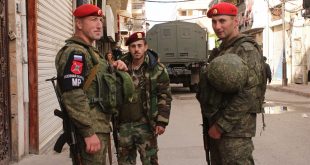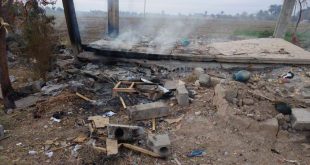NAHER MEDIA – INVESTIGATIVE REPORT
Since the 1980s, during the Iranian Revolution (Khomeini Revolution), Syria has been a target of the new Iranian project, because of its advantages in terms of strategic geographical location and the historical and political position of Damascus in the Middle East.
There were almost no obstacles to Iran’s implementation of its project in Syria, and with the presence of the regime of Hafez Al-Assad at that time, Iran’s steps were more stable in Syria.
At the beginning of its entry into Syria, Iran aimed to establish a foothold in Syria over the longer term and began to sow the seeds of Shiism in various areas of Syria, starting with the capital Damascus, the economic capital of Aleppo, and various areas in Syria. The eastern region of Syria has not been absent in Tehran’s plan, and Deir Ezzour was Iran’s first choice to make it a starting centre to spread Shiism in the east of the country.
Through a number of well-known figures in Deir Ezzour, Iran has been able to lay a foundation stone in the Euphrates river’s province, which has a distinct geographical location, as it shares a land border with Iraq.
For decades, with the blessing and facilitation of Assad regime, Iran has supported its cells in Deir Ezzour, making them the cornerstone of an upcoming project that has been in the shadows for many years, to bear fruit with the uprising of the Syrian revolution and the deviate of the Alawite regime from the path set for it by peaceful protests and subsequent military movement.
By the end of 2017, Iran had officially entered Deir Ezzour through its intercontinental militias, based on the cornerstones it had created years earlier in Deir Ezzour. Deir Ezzour has been significantly important to Tehran that it had confronted Assad regime and Russian forces to take control of some of its towns and villages, most notably the town of Al-Bukamal, east of Deir Ezzour, which IRGC made it as the capital of Iran in the eastern region of Syria.
As the days pass with the Iranian military presence in Deir Ezzour, from which a religious and cultural presence later emerged, the features of the Iranian project began to reveal increasingly. There were phenomena and situations that the militias brought into Deir Ezzour community, which had to be investigated to assess what Iran had actually achieved in Deir Ezzour and to refute everything else.
Attempts to bring about a demographic change (displacement and settlement)
Iranian militias, along with SAA and Russians, entered the southern bank of Deir Ezzour province in the fourth quarter of 2017, after pursuing a scorched-earth policy in all villages and towns in the western and eastern countryside and liberated neighbourhoods in the city centre. This policy resulted in a wave of displacement in the mentioned areas to escape the inevitable death by the killing machine of SAA, Iranians, and Russians. The forces and militias have entered empty villages, towns, and cities, establishing the new rules of the joint control of the region by the three sides.
Iran has chosen the centres of large cities in the eastern Deir Ezzour countryside, such as Al-Mayadeen and Al-Bukamal to spread its militias, where changes have begun to appear in these areas.
In the first period of the presence of Iranian militias in Deir Ezzour, there was a large presence of families of Iranian and Afghan leaders and members, who were transferred to several areas of the eastern Deir Ezzour countryside, the most important of which was Al-Mayadeen city.
Abu Muhammad, a resident of Al-Mayadeen who did not leave his city with the beginning of the operation by SAA, Russians, and Iranians, says:
“In the first months when the Iranian militias entered Al-Mayadeen, we noticed the arrival of a large number of families of leaders and members to Al-Mayadeen, where they settled in Al-Tamou neighbourhood, which later became one of the largest gathering places for militia families in Al-Mayadeen”.
After the cessation of military operations in the area, several residents returned to their areas under the control of SAA, Iranians, and Russians, to be surprised that their houses had been turned into military bases, barracks, or weapons depots. This prompted these people to flee either internally to Deir Ezzour, Damascus, and northern Syria, or abroad to Turkey and Europe.
Ahmad, a resident of Al-Asharah in the eastern Deir Ezzour countryside, says:
“When the Iranians entered Al-Asharah, we fled to Swedan Jazerra on the opposite bank of the Euphrates River, and when the situation got better, we tried to go back to our house. However, Hezbollah’s militia had captured it and turned it into a base, claiming that we are wanted for the regime, forcing us to flee to Turkey”.
Iranian militias have taken control of Villat Al-Dahiyah neighbourhood in Deir Ezzour after being evacuated from residents, and more than 50 families of Iranian leaders and members have settled in this neighbourhood.
It is worth mentioning that the largest number of families of Iranian members and leaders in Deir Ezzour did not last long for several reasons, the most important of which is the deteriorating security situation because of Daesh attacks and the continued airstrikes by IC and Israeli aircraft. The majority of families were returned to their countries, and some families who are responsible for some works such as cooking for the militias remained, and their temporary presence turned into regular visits as “pilgrims”.
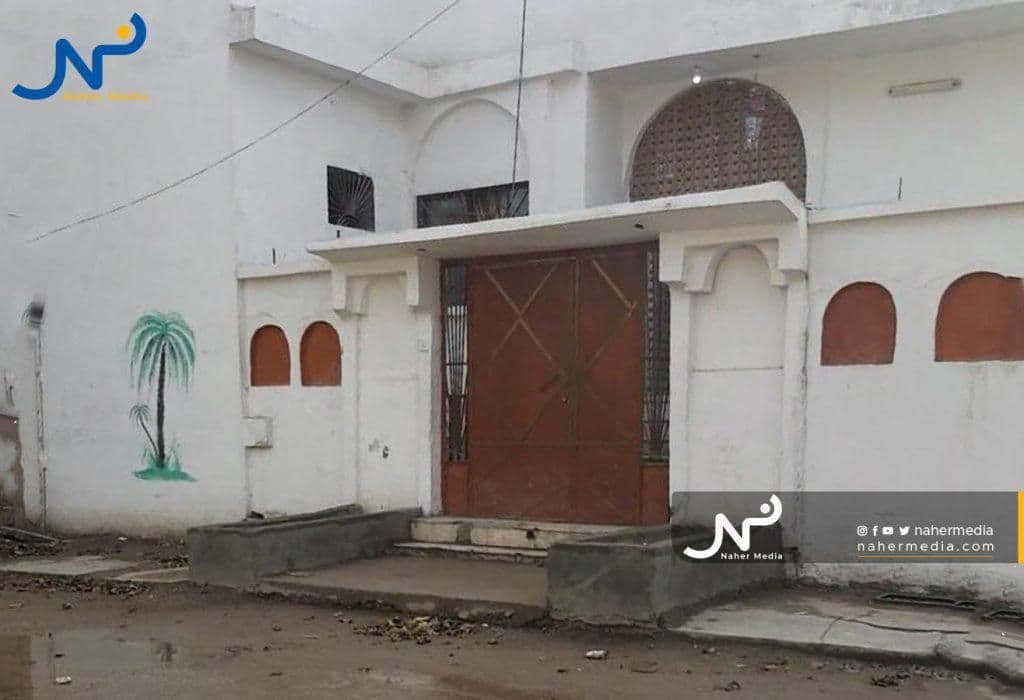
Al-Noor Satie Centre – Al-Mayadeen
Land acquisition
When Iranian militias established a foothold in Deir Ezzour and became the de facto ruler of some areas, such as Al-Bukamal, Tehran adopted the policy of land acquisition in Deir Ezzour, putting in place mechanisms to implement its goals such as using local brokers to buy lands and real estate for Iran.
Haj Askar, the military and security official of IRGC, was responsible for land acquisition in Al-Bukamal for Iran.
Haj Askar instructed his members in Al-Bukamal to buy lands and real estates for Iran and was able to buy a number of lands.
He purchased lands from a family of Al-Hasoun Tribe in the border area of Al-Hamidah for 200 million SYP nearly 8 months ago. Also, he purchased a house worth 35 million SYP near the Syrian-Iraqi border and Al-Faruq ice factory from its owner Saud Al-Najm in Al-Suwaiyia village in Al-Bukamal countryside. Nevertheless, other houses in Al-Bukamal neighbourhoods were purchased through real estate offices for the benefit of Haj Askar.
Iran does not only purchase real estate and lands, but some of its leaders seized the properties of displaced people, as happened in Al-Muhassan city in the eastern Deir Ezzour countryside, where an Iranian militia leader seized 250 hectares of agricultural lands and planted them with wheat.
Besides, Iranian militias have seized houses of opponents of the Syrian regime in Al-Mayadeen city near Al-Arbaeen Street on the outskirts of Al-Maharim neighbourhood, in Al-Saraya neighbourhood, in Al-Burj complex, and near Al-Kheder Mosque.
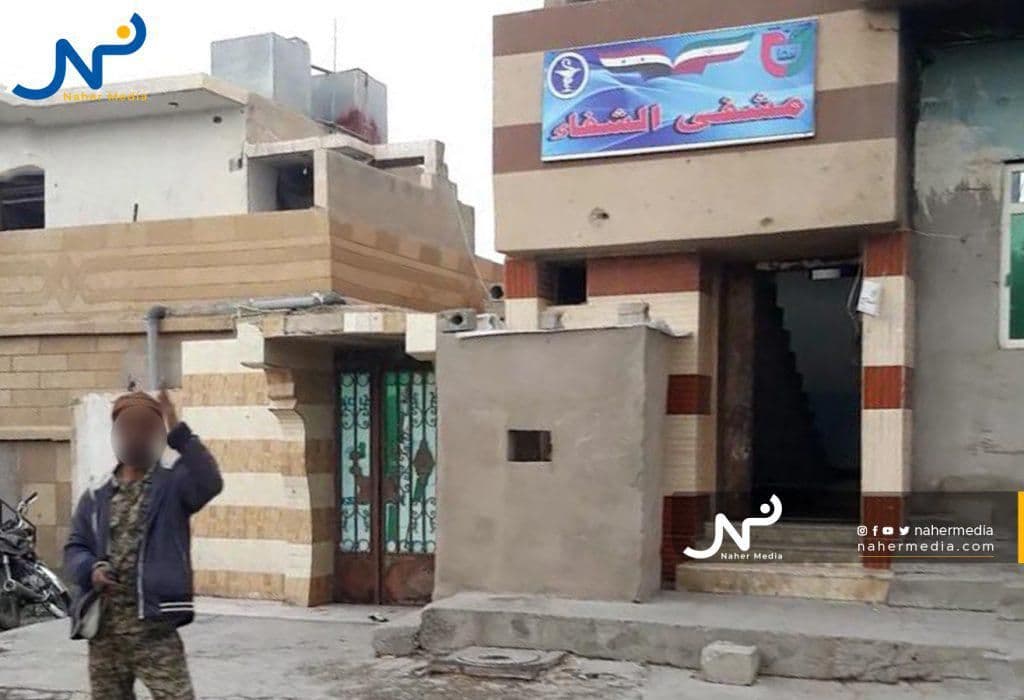
The Iranian Al-Shifa Hospital – Al-Asharah
The Iranian presence in Deir Ezzour in particular, and Syria in general, was not limited to the military presence like the other forces that entered Syria after 2011, but the Iranian presence has been turned into an indirect settlement through Iranian projects and activities that were introduced into the Syrian communities.
Tehran has apparently prepared a prior study of the targeted communities in Syria, as the steps it has taken in implementing its project have shown Iran’s knowledge of the host community.
In Deir Ezzour, the Iranian presence began to take other forms away from the military presence, where Iranian interest in the civil and cultural aspects of Deir Ezzour community has emerged through the opening of Iranian cultural centres (friends’ centres), which later played a major role in spreading Shiism in the province.
The activities of Iranian cultural centres began to emerge in Deir Ezzour in early 2019, where the militias launched cultural recreational courses targeting children and youth in Deir Ezzour, in Kashaf Centre, which belongs to the Iranian Cultural Centre.
Through these centres, Iran has indirectly planted its ideas, and the mobile theatre of the Iranian Cultural Centre quickly became present at all national and religious events. The theatre presents paintings and plays that convey Shiite beliefs, while all the Shiite celebrations such as funeral processions and Chest-beating parades have become a regular phenomenon in every Iranian celebration.
Later, the Iranian centres in Deir Ezzour have multiplied with different names, in Al-Mayadeen for example, Al-Noor Al-Satie Centre is holding activities similar to the activities of Kashaf Centre, and in Al-Bukamal there is Al-Ukhwa Al-Asdika Centre which is holding the same activities of the two former centres.
The activities of the Iranian cultural centres were not limited to Dawa activities but involved providing services as well, as the Iranian cultural centres allocated an office called the “Service Office” to implement service projects in the province under the auspices of Iran such as the project of rehabilitating the public park in Deir Ezzour, and the rehabilitation of Karamish Park in Saker Island in the city, which name was changed to Friends Club and partly turned into headquarters of IRGC. In addition to the rehabilitation and repair of a number of mosques, roads, and schools in the major cities of Deir Ezzour.
With the growing poverty in Deir Ezzour as a result of the deteriorating economic situation, Iran has manipulated the financial need of the people, attracting the youth of the province to join its militias by luring them with monthly salaries and other privileges given that they belong to powerful militias, in light of the insecurity situation that has become an intelligible feature in Deir Ezzour.
In regard of the medical situation in Deir Ezzour, Iran had left a significant impact, namely, seizing and rehabilitating former private hospitals and opening them to receive civilians and provide medical services for nominal fees and free of charge for the military personnel, which is a kind of attraction and winning over the people of Deir Ezzour. Among the hospitals seized by Iran is Al-Hana Hospital in Al-Bukamal, which name was changed to Al-Shifa Hospital, and another hospital opened by Iranian militias in Al-Asharah city east of Deir Ezzour with the same name of Al-Shifa Hospital, in addition to Euphrates Hospital in Deir Ezzour City.
Through its militias and centres, Iran has spared no effort to establish a foothold in Deir Ezzour and gain the needed popular support. It has recently revived the sports side under its supervision and held a soccer league for popular teams in Al-Suwaiyia Town in Al-Bukamal countryside, in addition to another soccer league with the participation of militia teams in the city, in an attempt to integrate its foreign militia members with the local community, because soccer is widespread and popular in Deir Ezzour community. Iran did the same in Deir Ezzour City, by finding a stadium for the Iranian Cultural Centre and holding new soccer leagues for different age groups with the participation of foreign teams and players.
Iran has changed some of the city’s landmarks by replacing the names of some of the city’s well-known public places with names inspired from the military culture of its militias, where it has replaced the name of Al-Hagana roundabout with Al-Moqawama (Resistance) roundabout, the name of Al-Sukariyah roundabout with Quds (Jerusalem) roundabout; and the name of Al-Intilaq roundabout with Al-Shuhada (Martyrs) roundabout.
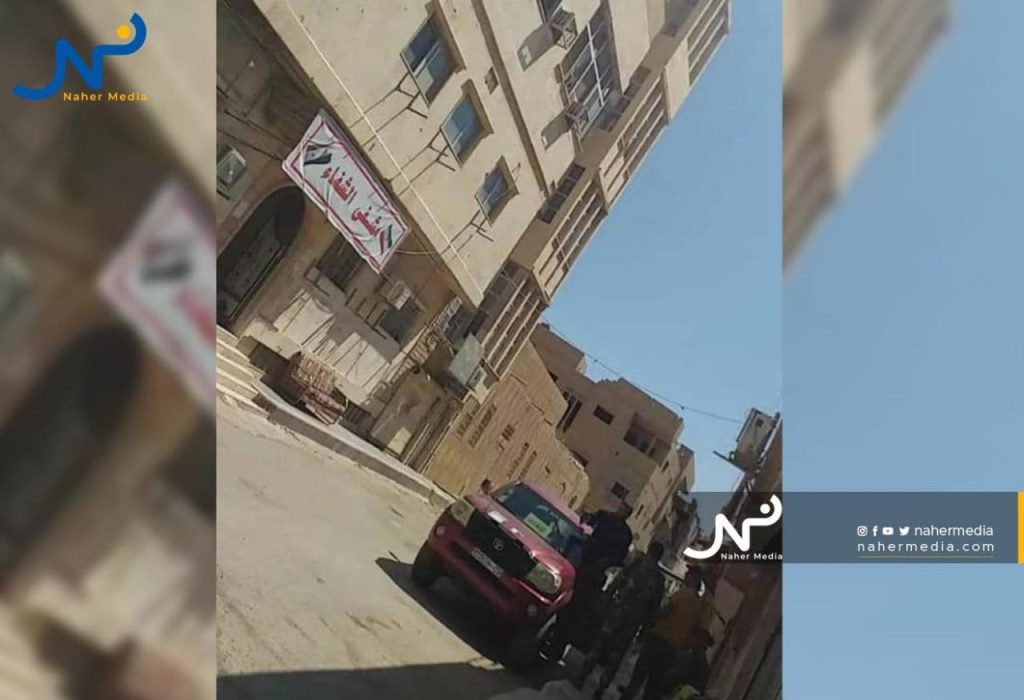
The Iranian Al-Shifa Hospital – Al-Bukamal
CONCLUSION
Despite all the implemented activities and adopted means in Deir Ezzour, Iran has not succeeded yet in bringing about a fundamental change in the community of Deir Ezzour for several reasons, the most important of which is the presence of Russia, which competes with Iran in controlling Deir Ezzour and limits the implementation of its objectives, in addition to the observation imposed by the international community on Iran and the pure nature of the community of Deir Ezzour, where all the people are united under one doctrine, the Sunni doctrine, which has been a major obstacle to Iran’s project in the region. Although Iran penetrated this community decades ago through figures who laid the foundation for Shiism, their influence was limited, and they made no difference in the community.
So, we can say that Iran has so far failed to take control of Deir Ezzour community, where its first project of bringing about a demographic change has faded away due to the unstable security situation and the absence of a safe environment for foreign families who were transferred in the early periods of the occupation of Deir Ezzour and were subsequently returned to their countries.
Iran is now seeking to achieve another project, changing the cultural identity of Deir Ezzour community despite the existing challenges, but it may seem easier to implement than the Demographic Change Project. Therefore, it is possible to see in the coming days new tools and other means in Iran’s hands to implement the project of changing the cultural identity of Deir Ezzour community.
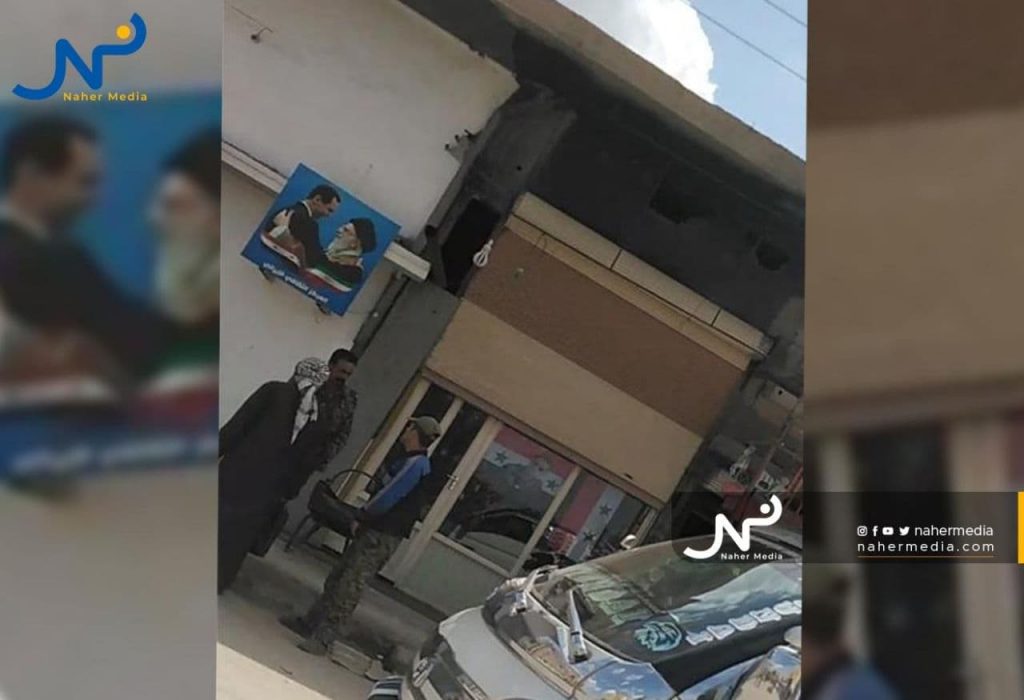
Cultural Centre Office – Al-Bukamal City
 Naher media Naher media
Naher media Naher media


